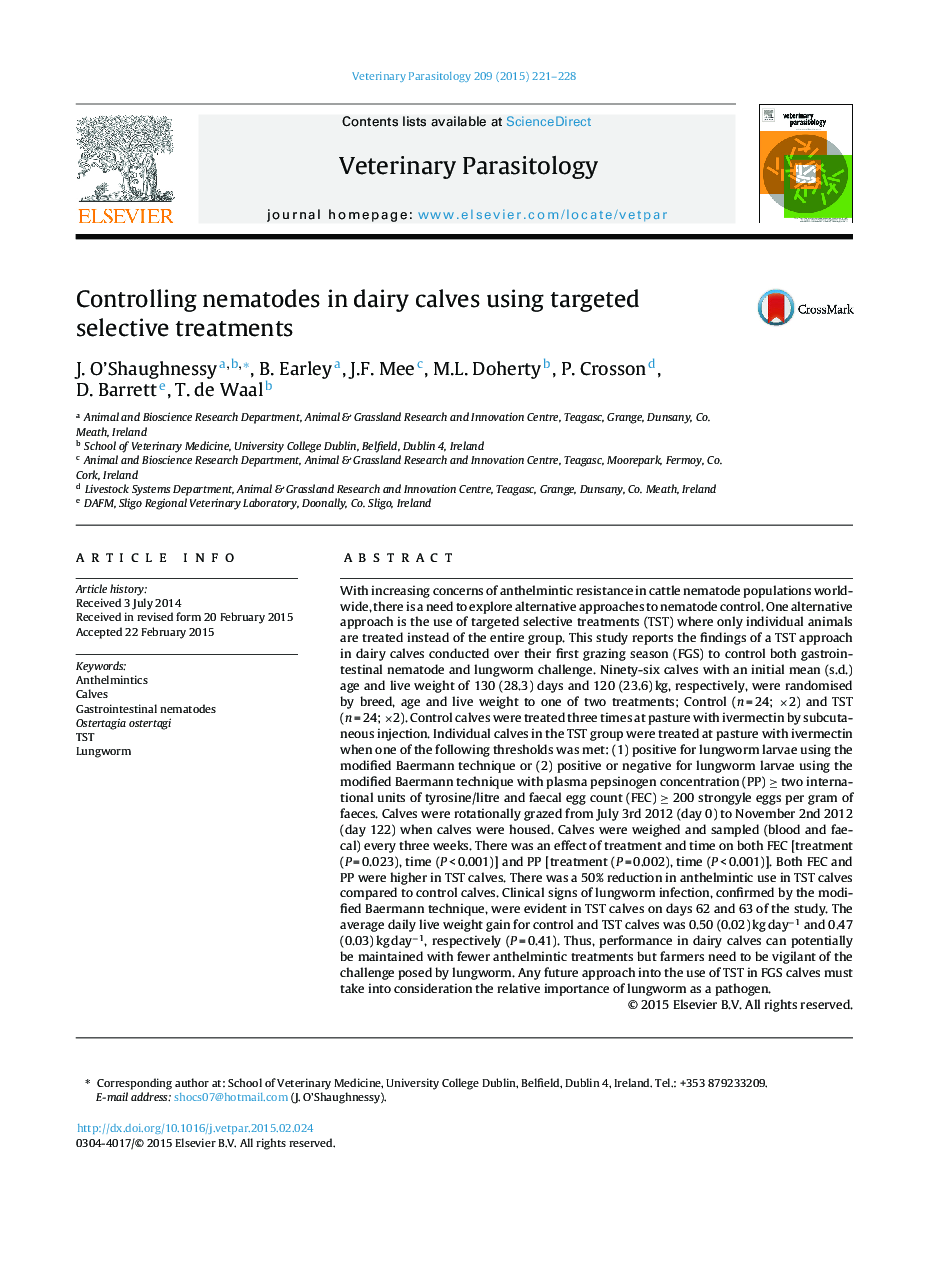| کد مقاله | کد نشریه | سال انتشار | مقاله انگلیسی | نسخه تمام متن |
|---|---|---|---|---|
| 5802721 | 1555672 | 2015 | 8 صفحه PDF | دانلود رایگان |
- A study of a TST approach to control nematodes in dairy calves under temperate conditions.
- There was a large reduction in anthelmintic use in TST calves compared to control calves.
- The average daily live weight gain for control and TST calves was similar.
- Clinical signs of dictyocaulosis were evident in some TST calves during the study.
- Future TST studies under these conditions should consider the use of lungworm vaccination.
With increasing concerns of anthelmintic resistance in cattle nematode populations worldwide, there is a need to explore alternative approaches to nematode control. One alternative approach is the use of targeted selective treatments (TST) where only individual animals are treated instead of the entire group. This study reports the findings of a TST approach in dairy calves conducted over their first grazing season (FGS) to control both gastrointestinal nematode and lungworm challenge. Ninety-six calves with an initial mean (s.d.) age and live weight of 130 (28.3) days and 120 (23.6) kg, respectively, were randomised by breed, age and live weight to one of two treatments; Control (n = 24; Ã2) and TST (n = 24; Ã2). Control calves were treated three times at pasture with ivermectin by subcutaneous injection. Individual calves in the TST group were treated at pasture with ivermectin when one of the following thresholds was met: (1) positive for lungworm larvae using the modified Baermann technique or (2) positive or negative for lungworm larvae using the modified Baermann technique with plasma pepsinogen concentration (PP) ⥠two international units of tyrosine/litre and faecal egg count (FEC) ⥠200 strongyle eggs per gram of faeces. Calves were rotationally grazed from July 3rd 2012 (day 0) to November 2nd 2012 (day 122) when calves were housed. Calves were weighed and sampled (blood and faecal) every three weeks. There was an effect of treatment and time on both FEC [treatment (P = 0.023), time (P < 0.001)] and PP [treatment (P = 0.002), time (P < 0.001)]. Both FEC and PP were higher in TST calves. There was a 50% reduction in anthelmintic use in TST calves compared to control calves. Clinical signs of lungworm infection, confirmed by the modified Baermann technique, were evident in TST calves on days 62 and 63 of the study. The average daily live weight gain for control and TST calves was 0.50 (0.02) kg dayâ1 and 0.47 (0.03) kg dayâ1, respectively (P = 0.41). Thus, performance in dairy calves can potentially be maintained with fewer anthelmintic treatments but farmers need to be vigilant of the challenge posed by lungworm. Any future approach into the use of TST in FGS calves must take into consideration the relative importance of lungworm as a pathogen.
Journal: Veterinary Parasitology - Volume 209, Issues 3â4, 30 April 2015, Pages 221-228
